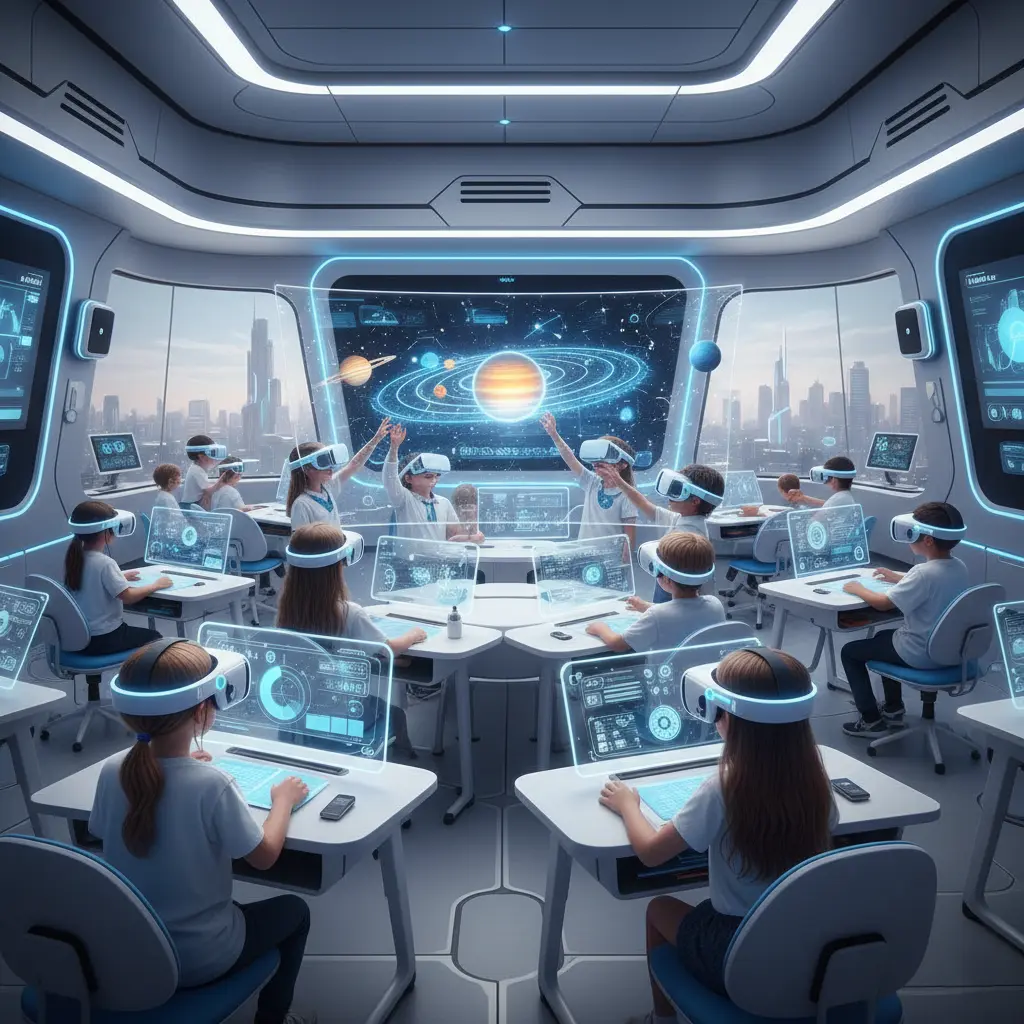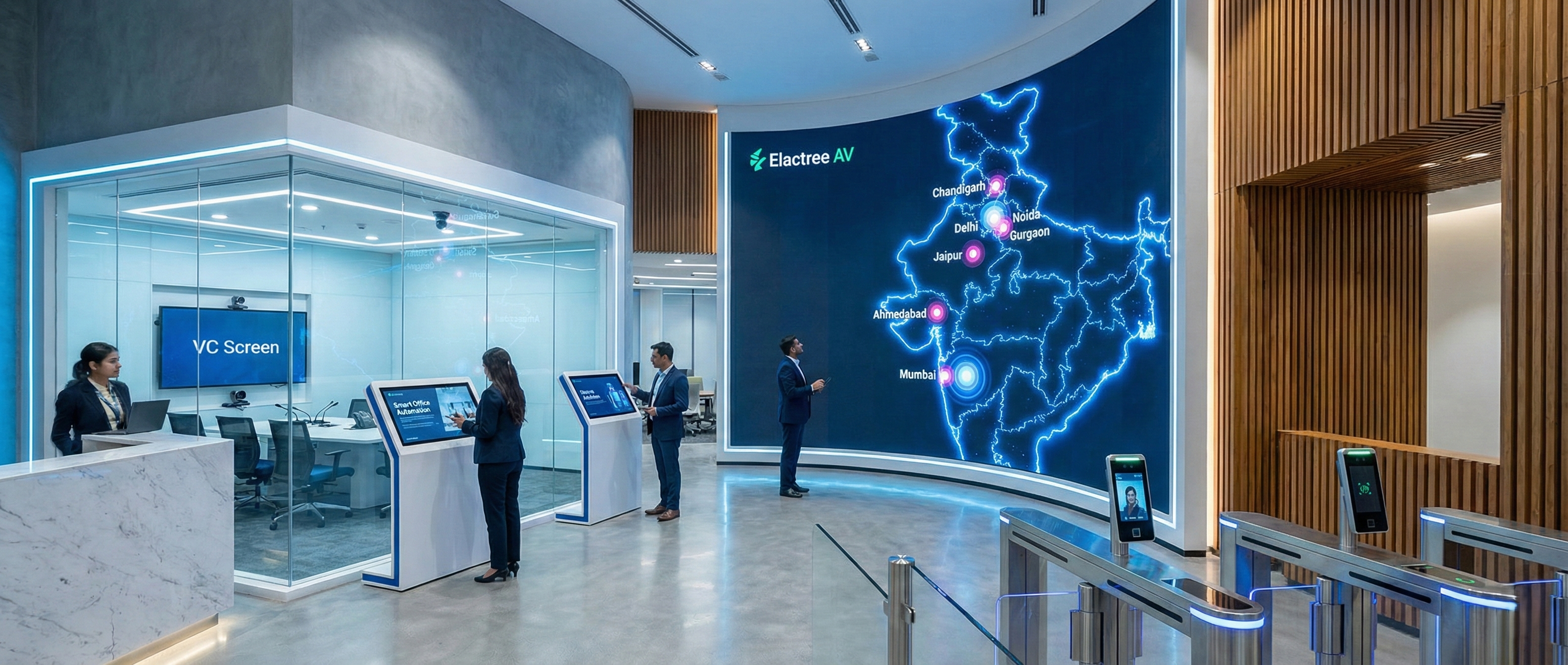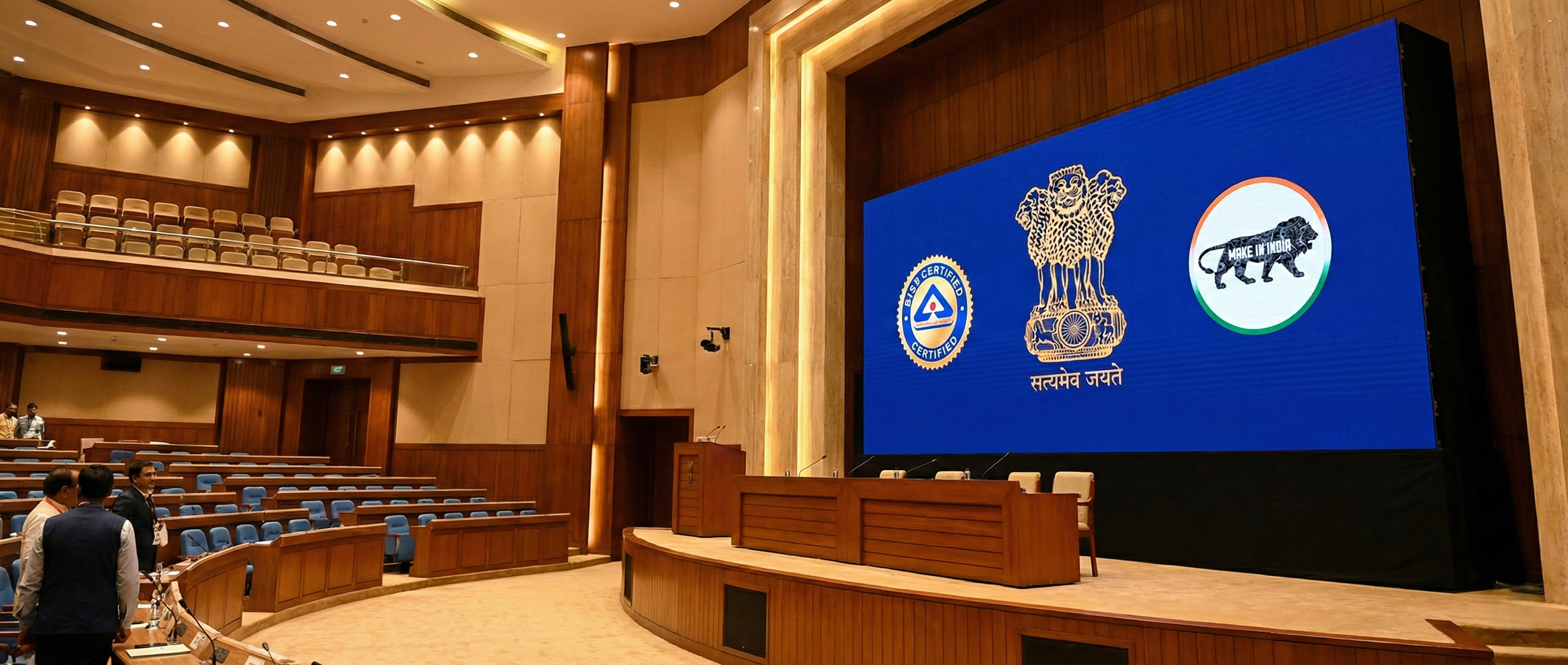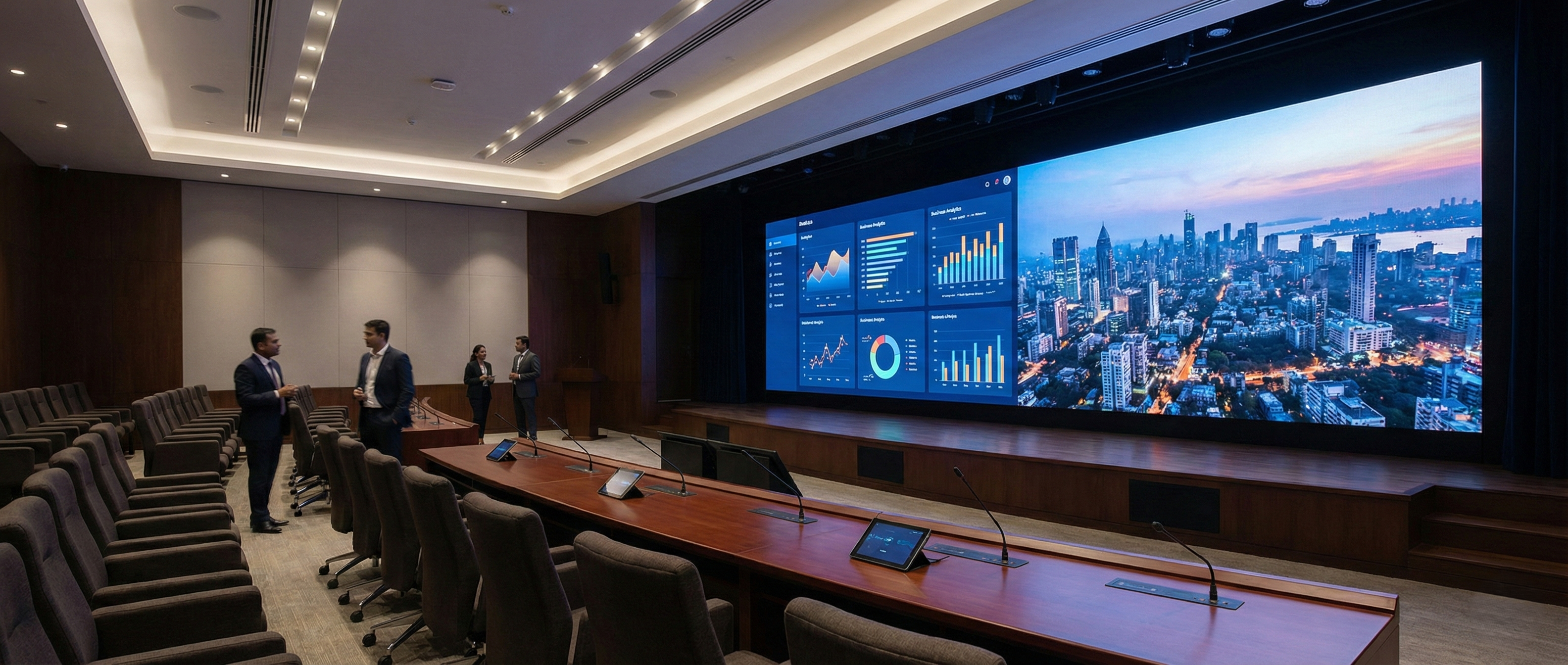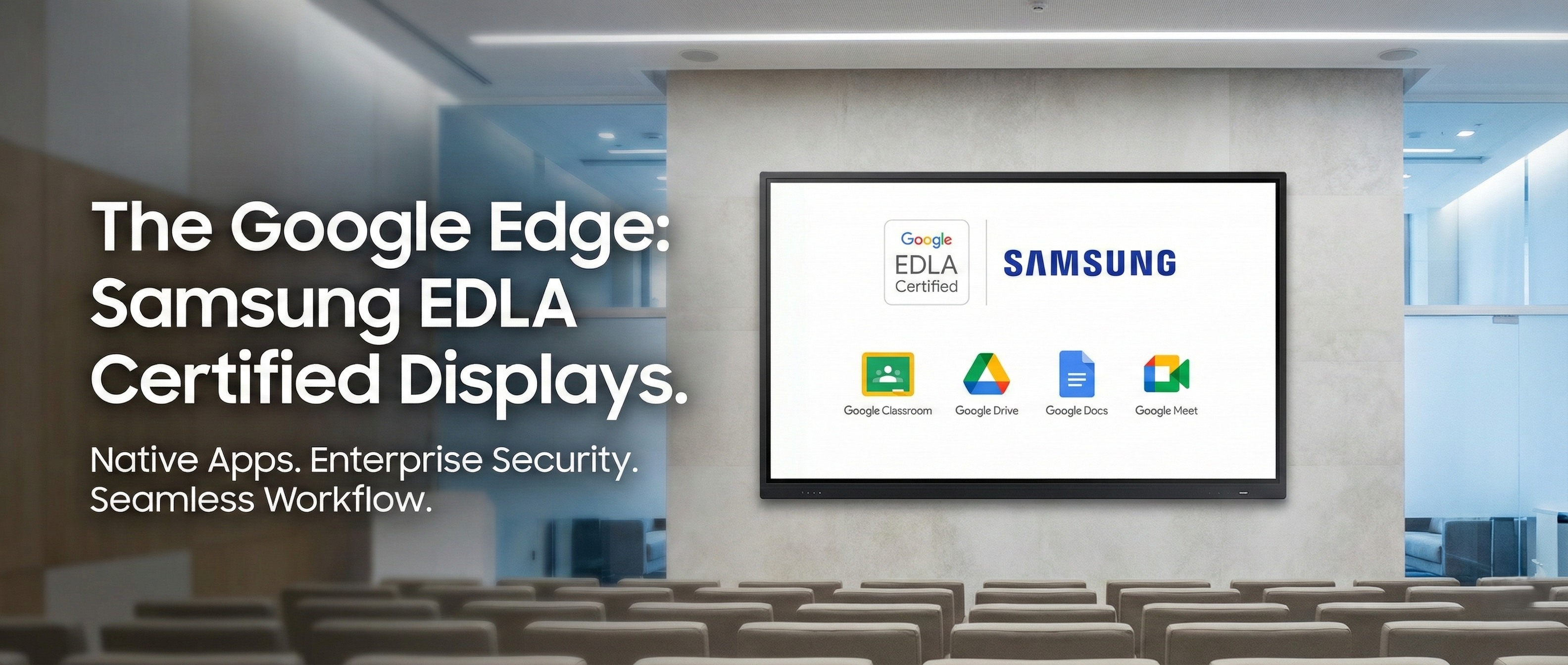Remember the classrooms of yesterday? Rows of desks, a chalkboard, and textbooks stacked high. The teacher stood at the front, delivering a one-size-fits-all lecture. While this model has served us for centuries, it's quickly becoming a relic of the past. We're now in the midst of a profound educational transformation, and at the heart of this shift are smart classrooms. In 2025, these aren't just a novelty; they're the new standard, leveraging cutting-edge technology to create dynamic, engaging, and personalized learning experiences.
The global EdTech and smart classrooms market is exploding, projected to reach over $214 billion by 2025. This isn't just a statistic; it's a clear signal that educators, institutions, and even governments are embracing this new paradigm. So, what exactly makes a classroom "smart," and how are these innovative environments fundamentally changing the way students learn and teachers teach?
This blog post will explore the key technologies driving this revolution, from the rise of AI in education to the power of immersive learning. We'll look at the undeniable benefits for both students and teachers, providing real-world examples and data-backed insights into how these spaces are preparing the next generation for a future we can only begin to imagine.
The Pillars of the Modern Smart Classroom
A smart classroom is more than just a room with a projector. It's a holistic ecosystem where technology, pedagogy, and infrastructure converge to create an enhanced learning environment. In 2025, the key components of a smart classroom go far beyond basic hardware. They are defined by their ability to adapt, personalize, and connect.
1. AI-Powered Personalized Learning 🤖
This is arguably the most impactful trend in smart classroom technology for 2025. Artificial Intelligence (AI) has moved from a futuristic concept to a practical tool that tailors education to each student’s unique needs. AI-driven platforms can analyze a student's performance, identify their strengths and weaknesses, and then generate custom learning paths.
Adaptive Learning Systems: These systems adjust the difficulty and content of material in real-time. For a math student struggling with a specific concept, the system provides extra practice problems and simplified explanations. For a student excelling, it offers more challenging, advanced material to keep them engaged. This ensures no student is left behind or bored.
Virtual Tutors and Chatbots: Students can get 24/7 support from AI assistants. These tools can answer homework questions, provide additional examples, and offer practice quizzes. This round-the-clock support is especially helpful for students studying at home, bridging the gap between in-class instruction and independent study.
Automated Assessments: AI systems can instantly grade quizzes and essays, providing immediate, detailed feedback. This frees up countless hours for teachers, allowing them to focus on direct instruction, one-on-one student support, and lesson planning. The system can even identify common misconceptions across the class, giving teachers valuable insights into where to focus their next lesson.
2. Immersive Learning with AR & VR
Imagine exploring the Amazon rainforest for a biology class or walking through ancient Rome for a history lesson without ever leaving the classroom. This is the power of immersive learning, and in 2025, Augmented Reality (AR) and Virtual Reality (VR) are making it a reality.
Virtual Reality (VR): By using VR headsets, students are transported to a different world. They can perform virtual dissections in a biology lab, explore the solar system, or tour a museum across the globe. This hands-on, experiential learning makes abstract concepts tangible and memorable, significantly boosting engagement and retention.
Augmented Reality (AR): AR overlays digital information onto the real world. A student can scan a textbook page with a tablet to see a 3D model of a cell or an animated historical battle scene appear right on their desk. AR applications turn static content into interactive, dynamic experiences, making learning more interactive and fun.
3. Collaborative and Connected Learning Environments
Modern smart classrooms are designed to foster collaboration and communication, preparing students for a world that demands teamwork. Cloud-based platforms and interactive displays are at the core of this.
Interactive Whiteboards and Displays: These are the new blackboards. Teachers can present multimedia content, annotate documents in real-time, and save lessons to be shared later. Students can also connect their own devices, sharing their work on the main display for class discussion.
Cloud-Based Platforms: Tools like Google Classroom and Microsoft Teams have become staples, allowing for seamless communication and file sharing. Students can work on a group project simultaneously from different locations, and teachers can provide real-time feedback. This enables flexible, blended learning models that combine in-person and remote instruction.
The Transformative Benefits of Smart Classrooms
The shift to smart classrooms isn't just about adopting new gadgets; it's about fundamentally improving the learning process for everyone involved.
For Students:
Enhanced Engagement and Motivation: Interactive elements, gamification, and multimedia content make learning more dynamic and exciting. When students are actively involved, they're more likely to stay focused and retain information.
Deeper Understanding of Concepts: Immersive experiences and interactive simulations allow students to grasp complex ideas more intuitively. For instance, studying the water cycle through a virtual simulation is far more impactful than reading a textbook diagram.
Improved Critical Thinking and Problem-Solving Skills: Smart classrooms encourage students to move beyond memorization. Collaborative projects, real-world simulations, and data analysis tools push them to think critically, analyze information, and find creative solutions.
Future-Proof Skill Development: Students become proficient in using the same digital tools and platforms they'll encounter in the future workforce. This early exposure to digital literacy and collaboration is a significant advantage.
For Teachers:
Increased Efficiency and Time Savings: AI-powered tools automate administrative tasks like grading and attendance tracking, giving teachers more time for what they do best: teaching.
Personalized Instruction Made Possible: With real-time data on student performance, teachers can easily identify who needs help and who is ready for a challenge. This empowers them to provide targeted, effective support to every learner.
Innovative Teaching Methods: Smart classroom technology opens up a world of creative teaching possibilities. Teachers can incorporate videos, interactive quizzes, and virtual field trips into their lessons, making the curriculum more engaging and relevant.
Real-Time Performance Insights: Learning analytics provide a holistic view of each student's progress and potential. This data-driven approach allows teachers to make informed decisions and intervene early when a student is struggling.
The Road Ahead: Challenges and Opportunities
While the benefits are clear, the widespread adoption of smart classroom technology isn't without its challenges. The edtech market is on a path of exponential growth, but there's still a lot to consider.
Bridging the Digital Divide: Not all schools have the funding for a full-scale smart classroom overhaul. Ensuring equitable access to these technologies is a critical concern, especially in rural and low-income areas.
Teacher Training: Technology is only as effective as the person using it. Comprehensive, ongoing training for educators is essential to ensure they are comfortable and skilled at integrating new tools into their teaching.
Data Privacy and Security: With more student data being collected, robust cybersecurity measures are paramount. Institutions must prioritize protecting sensitive information to build trust with students and parents.
Despite these hurdles, the future of education is undeniably digital. The increasing demand for online learning and the growing investments in EdTech signal a future where technology is a fundamental part of every educational journey. As technology becomes more accessible and intuitive, these challenges will be met with innovative solutions, making modern learning environments the norm rather than the exception.
FAQs about Smart Classrooms and the Future of Education
Q1: What is the main difference between a traditional and a smart classroom?
A: The main difference lies in the integration of technology to enhance the learning experience. A traditional classroom uses a teacher-centric, one-to-many instruction model, relying on a blackboard and textbooks. A smart classroom, however, is a student-centric, technology-integrated environment that uses tools like interactive displays, AI-driven software, and multimedia content to make learning personalized, engaging, and collaborative.
Q2: What are some examples of smart classroom equipment?
A: In 2025, smart classroom equipment typically includes interactive whiteboards or displays, student tablets or laptops, high-speed internet with Wi-Fi, audio-visual systems, and an integrated Learning Management System (LMS). More advanced setups may also feature VR headsets, 3D printers, and robotics kits to facilitate hands-on, experiential learning.
Q3: How do smart classrooms prepare students for the future?
A: Smart classrooms prepare students for a digitally-driven world by equipping them with essential 21st-century skills. They move beyond rote memorization to foster critical thinking, creativity, and digital literacy. By using technology for collaboration and problem-solving, students develop skills that are highly valued in the modern workforce, such as teamwork, effective communication, and adaptability.
Q4: Are smart classrooms replacing teachers?
A: No, smart classrooms are not replacing teachers; they are empowering them. Technology automates administrative and repetitive tasks, giving teachers more time to focus on personalized instruction, mentorship, and building relationships with students. Teachers are transforming from lecturers into facilitators and guides, leveraging technology to create more effective and dynamic learning experiences.
Q5: What is the impact of AI on personalized learning in 2025?
A: The impact of AI on personalized learning in 2025 is a game-changer. AI-driven platforms analyze a student's learning style, pace, and performance data to create a custom curriculum for them. This level of personalization ensures that every student receives the right support and challenges, helping them to master concepts at their own speed and stay motivated, ultimately leading to better academic outcomes.
Conclusion: Embracing the Revolution
The transformation of learning through smart classrooms is not a distant dream; it's a current reality shaping education in 2025 and beyond. By integrating tools like AI, AR, VR, and cloud-based platforms, we're moving from a rigid, standardized model to one that is flexible, engaging, and tailored to the individual.
This shift promises to create a generation of learners who are not just knowledgeable but are also critical thinkers, creative problem-solvers, and collaborative team players. The journey ahead will require continued investment in technology, teacher training, and a commitment to equitable access.
Ready to explore the next steps in your educational journey? Whether you're a parent, an educator, or a student, the future of learning is here. Check out our guide on The Top EdTech Tools for K-12 to see how these innovations are being applied today.

